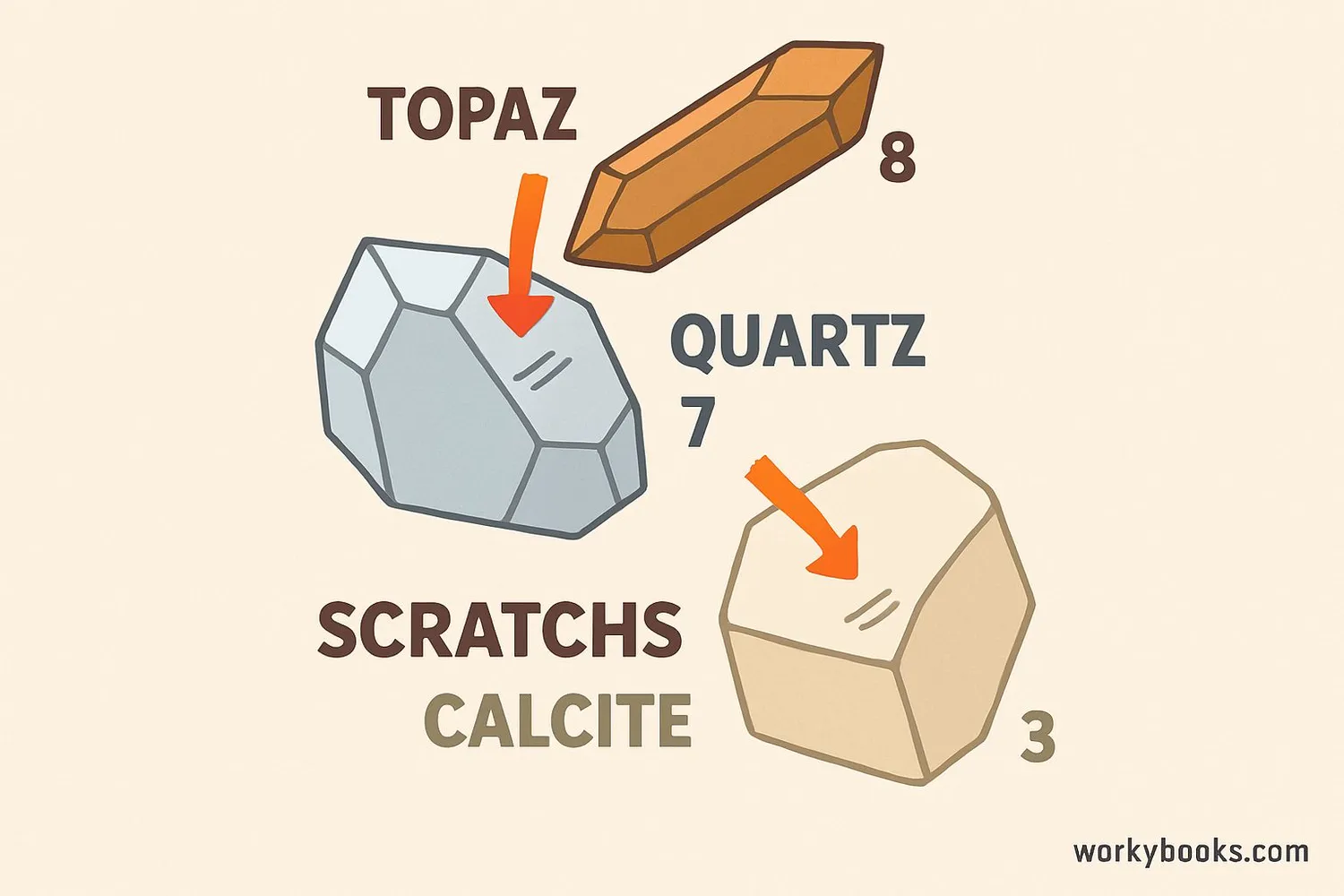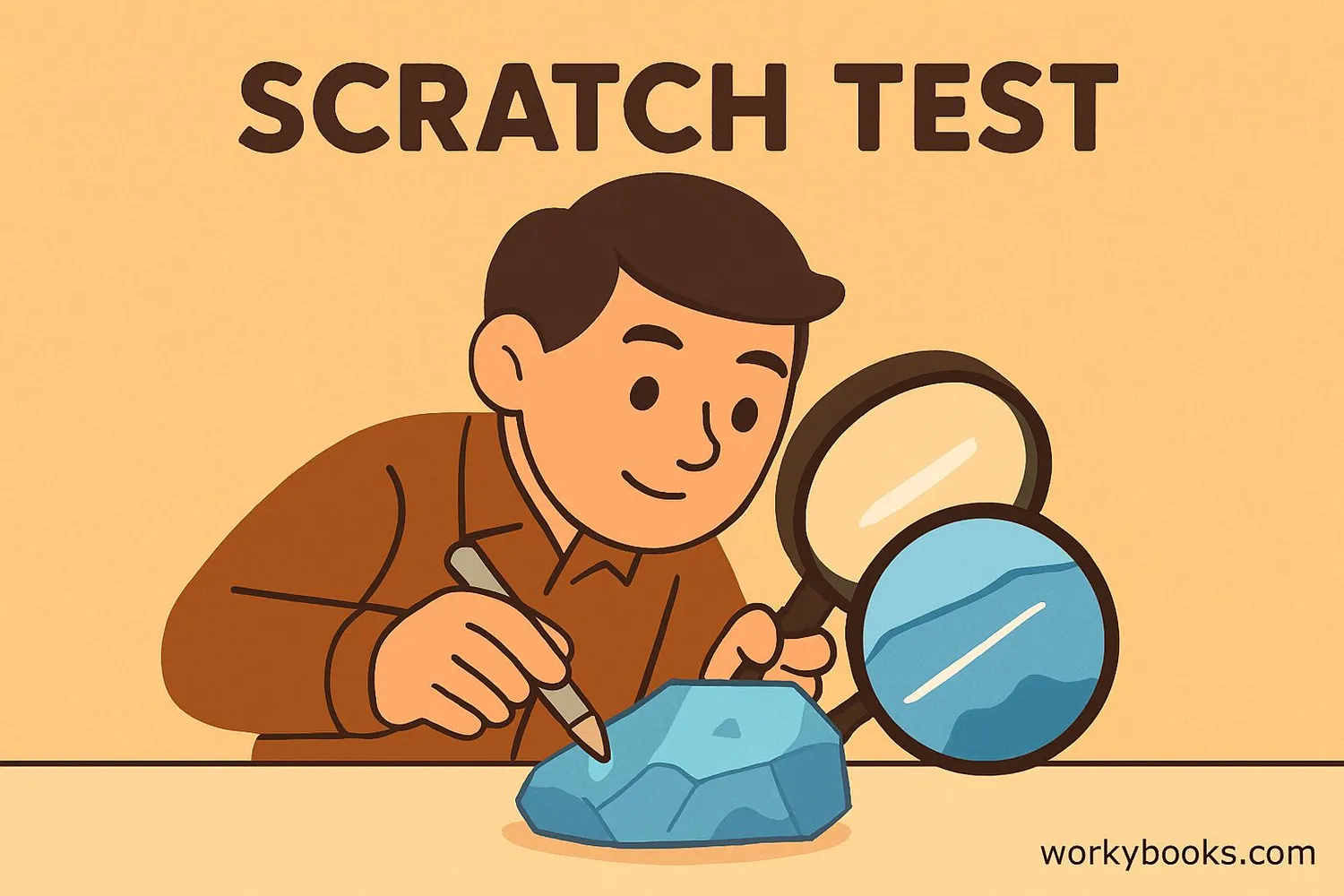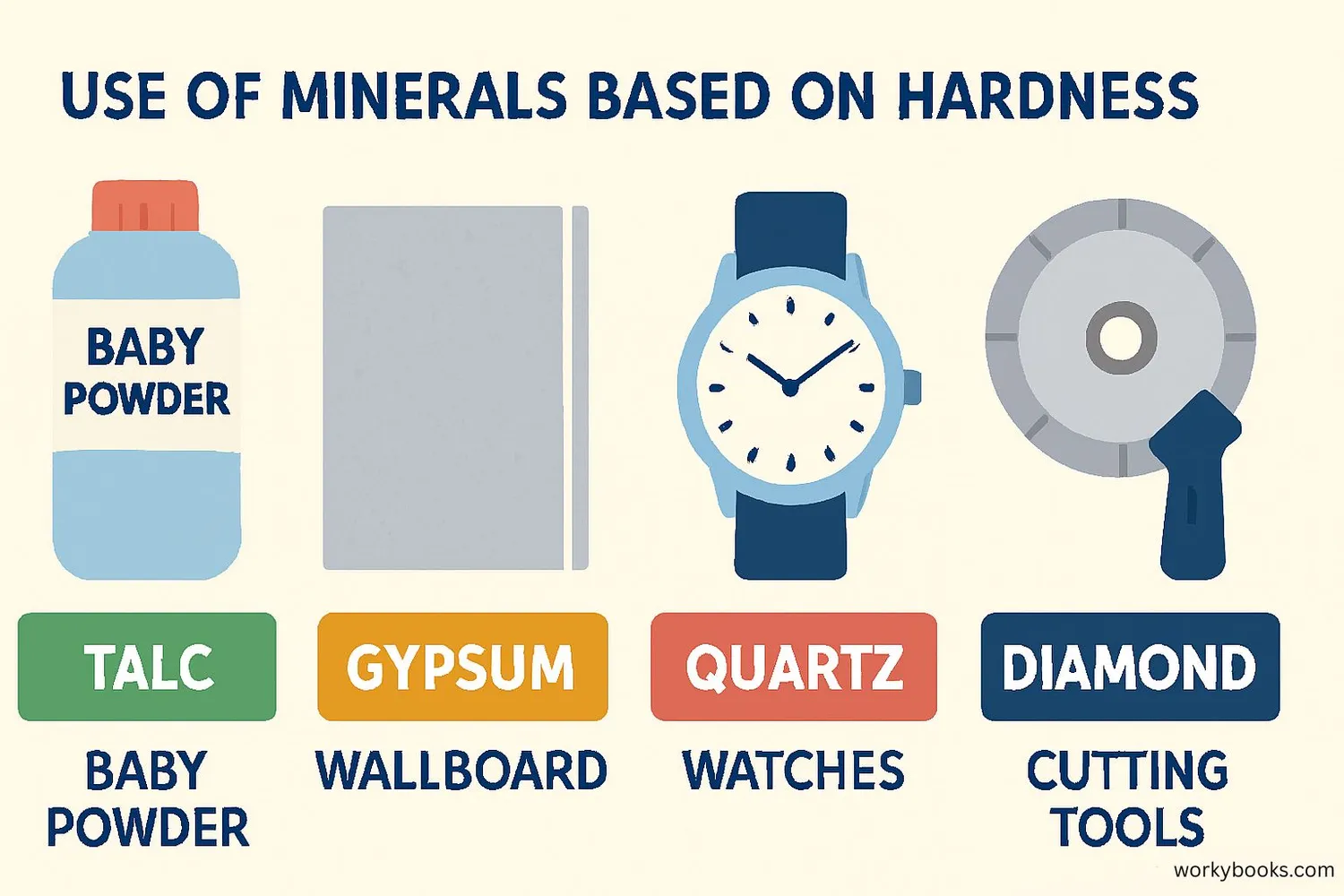Moh's Hardness Scale - Definition, Examples, Quiz, FAQ, Trivia
Discover how geologists measure mineral hardness
What is Moh's Hardness Scale?

Moh's Hardness Scale is a special tool that geologists use to measure how hard minerals are. It was created in 1812 by a German scientist named Friedrich Mohs. The scale has 10 levels that go from the softest minerals to the hardest minerals.
Think of it like a ladder for minerals! At the bottom is talc (level 1), which is so soft you can scratch it with your fingernail. At the top is diamond (level 10), which is the hardest natural material on Earth. This scale helps scientists identify minerals by testing how easily they can be scratched.
Science Fact!
Moh's Scale is a relative scale - a mineral with hardness 5 is about halfway between talc (1) and diamond (10) in scratch resistance!
How the Scale Works

Moh's Scale works on a simple principle: a harder mineral can scratch a softer mineral, but a softer mineral cannot scratch a harder one. The scale uses 10 reference minerals to compare against:
| Hardness | Mineral | Common Objects |
|---|---|---|
| 1 | Talc | Easily scratched by fingernail |
| 2 | Gypsum | Scratched by fingernail |
| 3 | Calcite | Scratched by copper coin |
| 4 | Fluorite | Easily scratched by knife |
| 5 | Apatite | Scratched by knife |
| 6 | Orthoclase | Scratches glass, scratched by steel file |
| 7 | Quartz | Scratches glass easily |
| 8 | Topaz | Scratches quartz |
| 9 | Corundum | Scratches topaz |
| 10 | Diamond | Scratches all other minerals |
The scale isn't evenly spaced - the jump from corundum (9) to diamond (10) is much bigger than from calcite (3) to fluorite (4). This is because diamond is about 4 times harder than corundum!
Scale Fact!
Quartz (hardness 7) is so common that many geologists carry a piece to test other minerals against!
Testing Minerals

Geologists use a simple method called the scratch test to determine a mineral's hardness. Here's how you can think like a geologist:
Find a Fresh Surface
Locate an unweathered area of the mineral to test
Start Soft
Try scratching with your fingernail (hardness 2.5)
Move Up
Try a copper coin (hardness 3), then a steel knife (5.5)
Try Glass
See if the mineral scratches glass (hardness 5.5)
Use Reference Minerals
Compare against minerals of known hardness
Important tip: Always test on a fresh surface because weathered minerals might be softer than they appear! Also, make sure you're making a scratch (permanent mark) not just a streak (powder that wipes away).
Safety First!
Always wear safety goggles when doing scratch tests. Mineral fragments can fly into your eyes!
Why Hardness Matters

Knowing a mineral's hardness helps geologists in many ways:
Identification
Hardness is a key property for identifying minerals
Practical Uses
Helps determine how minerals can be used in industry
Gemstone Value
Harder gemstones are more durable and valuable
For example:
• Talc (softest) is used in baby powder
• Calcite is used in cement and building materials
• Quartz is used in watches and electronics
• Diamonds (hardest) are used in cutting tools and jewelry
Understanding hardness helps us choose the right minerals for different jobs and understand how they form in nature.
Mineral Hardness Quiz
Test your knowledge with this mineral hardness quiz! Answer all 5 questions to see how much you've learned.
Frequently Asked Questions
Here are answers to common questions about Moh's Hardness Scale:
Fun Mineral Trivia
Discover some amazing facts about minerals and hardness:
Diamond Origins
Natural diamonds form about 100 miles below Earth's surface under extreme heat and pressure. They come to the surface through volcanic eruptions!
Softest Mineral
Talc is so soft that it's used in baby powder. A single gram of talc can cover a football field with a thin layer of powder!
Quartz Clocks
Quartz crystals vibrate at a precise frequency when electricity passes through them. This makes them perfect for keeping time in watches and clocks!
Hardness Champions
While diamond is the hardest natural mineral, scientists have created synthetic materials that are even harder! These are used in special industrial tools.


